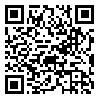1. Paradis M. The need for awareness of aphasia symptoms in different languages. Journal of Neurolinguistics. 2001; 14(2-4):85–91. doi: 10.1016/s0911-6044(01)00009-4 [
DOI:10.1016/S0911-6044(01)00009-4]
2. Nilipour R, Raghibdoust S. Manifestations of aphasia in Persian. 2001; 14(2-4):209–30. doi: 10.1016/s0911-6044(01)00015-x [
DOI:10.1016/S0911-6044(01)00015-X]
3. Goral M. Aphasia in Hebrew speakers. Journal of Neurolinguistics. 2001; 14(2-4):297–312. doi: 10.1016/s0911-6044(01)00019-7 [
DOI:10.1016/S0911-6044(01)00019-7]
4. Tsapkini K, Jarema G, Kehayia E. Manifestations of morphological impairments in Greek aphasia: A case study. Journal of Neurolinguisticss. 2001; 14(2-4):281–96. doi: 10.1016/s0911-6044(01)00018-5 [
DOI:10.1016/S0911-6044(01)00018-5]
5. Samar RG, Akbari M. A language teacher in the haze of bilingual aphasia: A Kurdish-Persian case. Procedia - Social and Behavioral Sciences. 2012; 32:252–7. doi: 10.1016/j.sbspro.2012.01.037 [
DOI:10.1016/j.sbspro.2012.01.037]
6. Mackenzie DN. The origins of Kurdish. Transactions of the Philological Society. 1961; 60(1): 68-86. doi: 10.1111/j.1467-968x.1961.tb00987.x [
DOI:10.1111/j.1467-968X.1961.tb00987.x]
7. Haig G. Alignment in Kurdish: A diachronic perspective [PhD thesis]. Kiel: University of Kiel; 2004.
8. Gunter MM. Historical dictionary of the Kurds. Oxford: Scarecrow Press; 2004.
9. Gunter MM. The A to Z of the Kurds. Oxford: Scarecrow Press; 2009.
10. Jamali G. [Phonetic and Semantic of Hure in Kalhori Kurdish (Persian)] [MA thesis]. Kermanshah: Razi University; 2013.
11. Ivanova MV, Hallowell B. Short form of the Bilingual Aphasia Test in Russian: Psychometric data of persons with aphasia. Aphasiology. 2009; 23(5):544-56. doi: 10.1080/02687030701800784 [
DOI:10.1080/02687030701800784]
12. Paradis M, Libben G. The assessment of bilingual aphasia. Brighton: Psychology Press; 1987.
13. Friedmann N. Speech production in Broca's agrammatic aphasia: Syntactic tree pruning. Broca's Region. 2006:63-82. doi: 10.1093/acprof:oso/9780195177640.003.0005 [
DOI:10.1093/acprof:oso/9780195177640.003.0005]
14. Caplan D. Neurolinguistics and linguistic aphasiology: An introduction. Cambridge: Cambridge University Press; 1987. [
DOI:10.1017/CBO9780511620676]
15. Clahsen H. Chomskyan syntactic theory and language disorders. In: Ball MJ, Perkins MR, Müller N, Howard S, editors. The Handbook of Clinical Linguistics. Hoboken, New Jersey: John Wiley & Sons; 2008. [
DOI:10.1002/9781444301007.ch10]
16. Cummings L. Clinical linguistics. Edinburgh: Edinburgh University Press; 2008.
17. Miceli G, O'Connor M, Menn L, Obler LK. Agrammatic aphasia: A cross-language narrative sourcebook. Amsterdam: John Benjamins Publishing Company; 1989. [
PMCID]
18. Ulatowska HK, Sadowska M, Kadzielawa D. A longitudinal study of agrammatism in Polish: A case study. Journal of Neurolinguistics. 2001; 14(2-4):321–36. doi: 10.1016/s0911-6044(01)00021-5 [
DOI:10.1016/S0911-6044(01)00021-5]
19. Broca P. Comments regarding the seat of the faculty of spoken language, followed by an observation of aphemia (loss of speech). In: Grodzinsky Y, Amunts K, editors. Broca's Region.Oxford: Oxford University Press; 1861.
20. Basso A. Aphasia and its therapy. Oxford: Oxford University Press; 2003.





